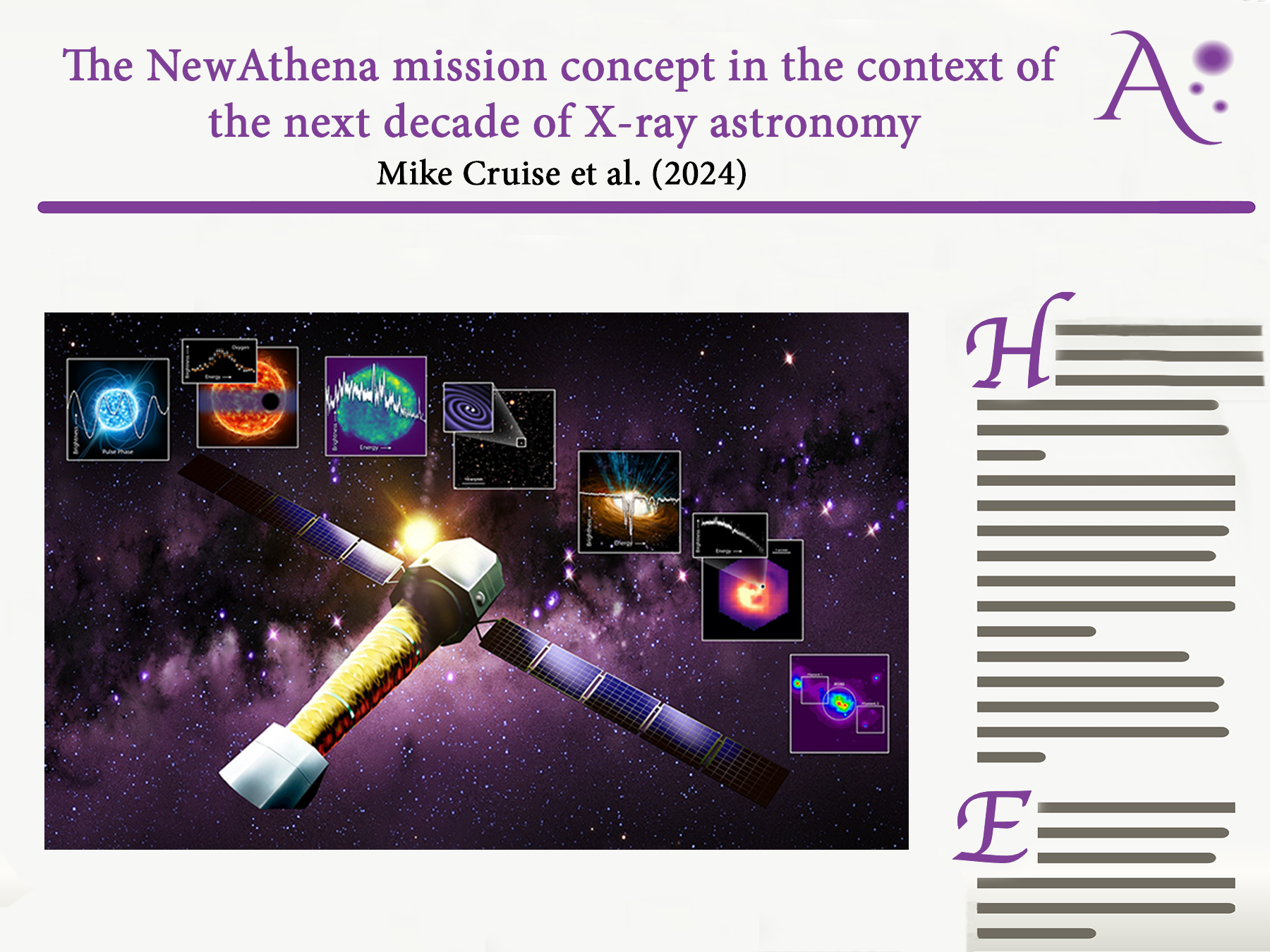
The NewAthena mission concept in the context of the next decade of X-ray astronomy

Abstract: Large X-ray observatories such as Chandra and XMM-Newton have been delivering scientific breakthroughs in research fields as diverse as our Solar System, the astrophysics of stars, stellar explosions and compact objects, accreting supermassive black holes, and large-scale structures traced by the hot plasma permeating and surrounding galaxy groups and clusters. The recently launched X-Ray Imaging and Spectroscopy Mission observatory is opening in earnest the new observational window of non-dispersive high-resolution spectroscopy. However, several questions remain open, such as the effect of the stellar radiation field on the habitability of nearby planets, the equation of state regulating matter in neutron stars, the origin and distribution of metals in the Universe, the processes driving the cosmological evolution of the baryons locked in the gravitational potential of dark matter and the impact of supermassive black hole growth on galaxy evolution, to mention just a few. Furthermore, X-ray astronomy has a key part to play in multimessenger astrophysics. Addressing these questions experimentally requires an order-of-magnitude leap in sensitivity, spectroscopy and survey capabilities with respect to existing X-ray observatories. This article succinctly summarizes the main areas where high-energy astrophysics is expected to contribute to our understanding of the Universe in the next decade and describes a new mission concept under study by the European Space Agency, the scientific community worldwide and two international partners ( JAXA and NASA), designed to enable transformational discoveries: NewAthena. This concept inherits its basic payload design from a previous study carried out until 2022, Athena.

